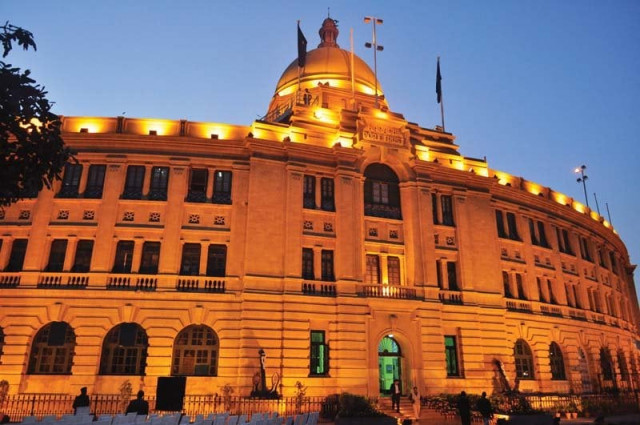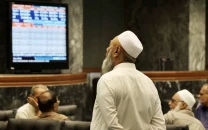Investment in port infrastructure
It will help buy new vessels, aid exporters in sustaining earnings growth

Federal Minister for Maritime Affairs Ali Zaidi has announced that Karachi Port Trust (KPT) will construct a six-lane bridge connecting the East and West wharves within 18 months. The estimated cost of the project is Rs2.3 billion.
Finally, the government seems to have realised what a vital role Karachi Port plays in foreign trade. What has prompted the government to go for the construction of the connecting bridge is that in the absence of it, the movement of import and export cargo at the port has become too difficult.
That is resulting in undue delay in the clearance of inbound and outbound foreign shipments, thus causing hardships for both importers and exporters.
Delay in clearance of export cargo means loss of business, which deprives Pakistan of the much-needed foreign exchange. And delay in clearance of import cargo means late arrival of key raw material for export-oriented industries. This, in turn, affects the growth rate of exports.
Besides, delayed arrival of finished imported goods in the market makes them pricier, at a time when excessive rupee depreciation has already made all imported stuff prohibitively dearer, due to the additional cost incurred by importers in the form of demurrages and cost of storage.
Since fuel oil prices are also on the rise, by the time an importer gets his cargo cleared from the port and makes arrangement for its transportation to the points of reception, the additional cost of transportation also adds to the total cost of imported goods.
Naturally, then those goods become more expensive in the domestic market regardless of whether they are meant for end-consumers or traders or industrialists catering to just domestic markets or both domestic and foreign markets. Hopefully, you see the point dear readers!
When China made a generous commitment to make $3.5 billion investment in the Karachi Coastal Comprehensive Development Zone (KCCDZ) at the end of September this year, Zaidi and other federal ministers rushed to issue self-congratulatory messages on social media.
But none of them bothered to explain why even a fraction of this investment was not flowing into areas that directly relate to the augmentation of port facilities or Pakistan’s decaying shipping industry.
Although part of the $3.5 billion foreign direct investment (FDI) would be used for the development of fisheries sector – and that must be praised wholeheartedly, generally speaking, KCCDZ is more about constructing mixed-use residential and commercial projects on the underutilised land of KPT.
Twin benefit
Seaports play a key role in promoting a country’s exports and containing its cost of imports. A country with first-class operational, integrated seaports can expect to exploit this twin benefit for reducing its trade deficit.
According to a 2019 report of the World Economic Forum, Pakistan was ranked 70th in terms of quality of port infrastructure, far behind Egypt (38th), Turkey (48th), China (49th) and India (51st).
Only recently, Pakistan Textile Exporters Association complained through a press statement that $500 million worth of export cargo was stuck at ports “due to unavailability of vessels or container release orders.”
It simply means that congestion and chaos at harbours due to lack of timely dredging and maintenance of water channels continues to make availability of ships uncertain. It also means that delay in cargo clearance due to congestion at ports results in delayed loading of export cargo onto ships that luckily become available.
Now, the reason why our exporters and importers have to rely almost exclusively – with very little exception – on foreign flag carriers is that Pakistan National Shipping Corporation (PNSC), our own flag carrier, does not have the right number of vessels.
You will be surprised to know that PNSC by its own admission manages a fleet of just 11 ships whereas Bangladesh National Shipping Corporation boasts of a fleet of 13 vessels.
PNSC acquired its 11th vessel in 2011. Since then, it has not been able to add any vessel to its fleet simply due to paucity of funds. Here we have a case for making real large investment in the shipping industry.
Freight charges
Shipping charges have skyrocketed in the post-Covid world. The container freight rate index stood at just $1,342 per tonne in July 2019, but at the end of November 2021 the index closed at $9,353 a tonne, after scaling an all-time high of $10,323 in September.
The unprecedented increase in cargo movement along with a substantial increase in merchant insurance charges have raised the cost of exports and imports, offsetting the impact of incentives offered to exporters by different governments.
Pakistani government and exporters are no exception. Both are struggling and may continue to struggle in the foreseeable future for ensuring a sustainable growth in export earnings.
Making sizable investment in port infrastructure and shipping industry, particularly in the acquisition of vessels for PNSC, may help in providing the export sector a crucial cushion it needs to sustain growth in earnings.
The development of Gwadar Port is a big success story of China-Pakistan Economic Corridor (CPEC). But the government would do well to invite foreign investment, both under CPEC umbrella as well as from other countries, in the development and maintenance of physical infrastructure at all other ports – Karachi Port and Port Qasim, which are the most important ones.
The writer is an electronic engineer and pursuing Master’s degree
Published in The Express Tribune, December 6th, 2021.
Like Business on Facebook, follow @TribuneBiz on Twitter to stay informed and join in the conversation.



















COMMENTS
Comments are moderated and generally will be posted if they are on-topic and not abusive.
For more information, please see our Comments FAQ